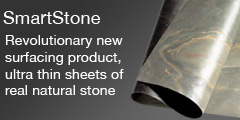PRODUCT INFORMATION
We now supply CORRIBOARD in both standard and Flame retardant sheets. Sheet size 2440 x 1220 and available in 2mm , 5mm and 10mm with the option of other sizes also. Contact us for more Details

Shrink Film
VERISAFE SHRINK FILMS / FLAME RETARDANT SHRINK FILMS
VERISAFE FLAME RETARDANT SHRINK FILMS are the highest certified shrink films on the market today and comply to and exceed all industry standards in this area
Some shrink films on the market today claim to meet the EN 13501 test which is the standard European reaction to fire classification and CE marking for permanent installation in buildings where applicapable, and may also meet UK & Irish buil;ding regulations dependant on application. However this classification is NOT third party certification and cannot be taken as being equivalent to the LPS CERTIFICATION ( Loss Prevention Certification Board ) 1207 & 1215 which is the standard required by many Irish & UK insurers and specifiers for temporary protection materials used in buildings under construction or undergoing renovation/ scaffoldings etc.
VERISAFE FILMS are authorised to use the LPCB mark LPS 1207 and 1215 on their Flame Retardant films having complied fully with the requirements & yearly Audits for the LPCB approval for listings of Protective covering materials / issue 2 and also issue 3 / Listing for Scaffold cladding
LPS 1207 is quoted in the infires/FPA document - Fire Protection Construction Sites; joint code of practice on the protection from fire of construction sites and buildings undergoing renovation ( seventh edition may 2009)
VERISAFE FILMS also hold certification DIN 4102 / building material Class B1 / the material has met the demands for Non - readily ignitable building materials
PLEASE CONTACT US FOR COPIES OF ALL CERTIFICATIONS REGARDING VERISAFE INDUSTRIAL SHRINK FILMS.
VISIT THEIR WEBSITE WWW.SOLICOM-VERISAFE.COM
Shrink Film is determined by the resins and additives used, the extrusion process and the extrusion and associated equipment. Not all shrink films are created equal. The key ingredients of a quality shrink film, is the type of resin, the additives of EVA, UVI and anti-block. The extruder used to make the blown film has a die where the gap and its concentricity keep gauge tolerance within parameters. Other parts of the equipment include the winder that takes the collapsed film, gussets and/or folds it, and puts it on rolls of certain widths and lengths.
The material(s) used to make shrink film must be 100% fractional melt virgin resin(s), that is not reprocessed material, with a primary mixture of low density polyethylene (LDPE) and a secondary mixture of linear-low density polyethylene (LLDPE). To achieve a balanced shrink (50 to 60% in the machine direction (MD) and 40 to 50% in the transverse direction (TD), and an overall shrink of 25%, the base resin should have a. 25 melt-index. A light stabilizer (ultra-violet inhibitor/UVI) of the hindered amine rather than the benzephenone type gives the shrink film its outdoor service life expectance. An EVA (ethyl-vinyl-acetate) additive gives the shrink film flexibility, greater puncture resistance, greater toughness and deters splitting and brittleness in high winds and extreme cold weather. An anti-block agent (slip) prevents the film surfaces from sticking together during the manufacturing process and allows for easy unroll/unfold from the roll by the user. Excess or low quality anti-block material will cause the film surface to feel oily and prevent tape from sticking to the surface or film-to-film-fusion. Colour additives are used to give the shrink film a blue or white tint that should result in a minimum 65% opacity.
The extrusion process, starting with the blending of the resins and additives, their melting and passage through the die determines the mechanical attributes of quality of the shrink film. After exiting the die the film goes through the air cooling ring and travels up to the guide rolls, where the film bubble is collapsed and flattened and then goes to the winder where it is put on rolls. This mechanical process will determine such quality factors of film thickness, gauge control within required tolerances, homogeneity where resins and additives are equally dispersed and the film is "balanced" and no physical damage.To Visit Verisafe Website click on the link below.........
Attachment Tape – Patching & Reinforcement Tape
Pressure sensitive adhesive tapes used with shrink wrapping are for the purpose of attaching the shrink film to the object being wrapped, patching holes or thin areas of the shrink film, reinforcing areas of the shrink film that may be subject to stress during storage or shipping and for attaching access door and vents to the shrink film. Other uses for these tape products may be applicable on a case-by-case basis. Tapes usually are associated with packaging, preserving and protection, have substrates (backings) of cloth, paper and polymer (plastic) and adhesive bases of acrylic, polyurethane, rubber and silicone. For shrink-wrapping applications, this selection and following application section address only the polyethylene family of polymer backings, polyurethane and rubber adhesive and for the purpose of protection of products. These tapes have been selected from the vast array of tapes on the market so as to provide specific application and performance properties in a wide temperature range over time.
Selection The hull and Attachment Tape is a polymer/polyurethane adhesive tape engineered for securing shrink film to an unpainted fibreglass surface. It is the top rated tape for this purpose and has a multitude of other applications where long-term protection is a factor. It is also referred to as preservation tape.
The Patching and Reinforcing Tape is a polymer/rubber adhesive tape with a low elongation factor. Making it suitable for reinforcement of shrink film areas that may need additional thickness or for patching holes.
Application
If a tape is to perform correctly, then use and storage practices are important. When using a pressure sensitive adhesive tape, remember that failures can occur if good application procedures are not followed. Surfaces to be taped should be free of oil, dirt and moisture contaminates. Surfaces must be clean and temperatures must be with the specified ranges (application temperature range (degree F) 40/110) (Specification data is from manufacturers tests and/or based on use experience, or a combination of both and is not warranted to be 100% accurate). Surfaces that have been waxed or coated may affect the adhesion properties of a tape. Do not apply any of these tapes to painted or coated surfaces without first determining that the selected tape and procedure will give desired results and not problems upon removal. If tape is to be applied under cold conditions or below the specified minimum, warm the tape and surface before application. As the tape is unrolled, it undergoes a stretching or elongation. Allow the stretched tape to relax and return to its normal state before applying. Too long a section of tape pulled from the roll may result in curling. When this occurs, pull shorter lengths of tape before applying. As tape is unrolled and applied to the surface, make sure that a steady and even hand pressure is applied so that a solid contact is established between the adhesive and the surface. Most tape failures occur because of inadequate application pressure to adhere the adhesive to the surface.
Tape Removal Procedure
When tape has been used to secure the shrink film to a product, such as fibreglass boat hull, care should be take to make sure the removal process does not damage the product surface and that no adhesive transfer occurs. Locate the end of the applied tape, or start lifting the tape at the selected place. Taking the end of the tape pull up and back at about a 30 degree angel, watching for any adhesive legging or sticking to the surface. At this angle and in this manner the adhesive will have a tendency to stay with the backing. The adhesive should come off the surface completely. Do not remove the tape pulling at a 90 degree angle or lifting straight up.
Caution:Because of the aggressive adhesive of tapes used in shrink wrapping, they should not be applied to skin surfaces and should be kept out of reach of children and others having the inability to use these and similar products. Shrinkwrap tapes and film should be kept out of the reach of children to prevent the possibility of suffocation.
STRAPPING – TIE DOWN & REINFORCING
Strapping, or flat rope, is used in the shrink wrapping process to secure the edges of the shrink film to the object being wrapped and to support large areas where there is no product backing, before heat shrinking the film and after to keep the film from sagging or being blown by the wind.
A cross-woven polyester flat strap is used primarily for its break strength, low elongation and non-residual stretching and provides security and reliability of the shrinkwrap cover. Rope or other cordage usually has a great deal of elongation and residual stretching making them unsuitable for the shrinkwrap process.
Flat strap used for most shrinkwrap application is 1⁄2 or 3⁄4 in width. The strap is usually wrapped around the item and one end tied to the other. A series of loops and knots can be employed to take the slack out of the tape and put tension on it. If the shrinkwrap cover is to stay on, the strapping must hold it secure. Buckles are used when knot tying is not appropriate. The strap ends are secured by weaving them in to the buckle and by use of a tensioning tool (tensioner) drawing the strap tight. The buckle prevents the taut strap from loosening. Use care when putting tension on the strap. Too much tension can cause damage to the product.
Reinforcing strap can be used in large unsupported areas to prevent the film from sagging or to prevent the shrinkwrap from billowing in the wind. These reinforcing straps can be placed under or over the shrinkfilm or both depending on the circumstances.
Caution: Because of the aggressive adhesive of tapes used in shrink wrapping, they should not be applied to skin surfaces and should be kept out of reach of children and others having the inability to use these and similar products. Shrinkwrap tapes and film should be kept out of the reach of children to prevent the possibility of suffocation.
DESSICCANTS
A desiccant is a dehydrating agent that attracts moisture from the atmosphere and absorbs and holds particles of water to itself. Water and water vapour can cause considerable damage by direct or indirect means, particularly when confined in airtight structures. Dampness will result in fungus and mildew formation and water vapour on metallic surfaces can cause corrosion and rust. It is important to recognise that while the inside of an airtight shrink wrap cover or other enclosure may feel dry to the touch, the wrapped product may have absorbed water in the material and changes in temperature can desorb this water and condense it into droplets causing water spots and other damage. Therefore, it is important to consider moisture and mildew factors when shrink wrapping and to take preventative measure to combat resultant problems.
Caution: Because of the aggressive adhesive of tapes used in shrink wrapping, they should not be applied to skin surfaces and should be kept out of reach of children and others having the inability to use these and similar products. Shrinkwrap tapes, film and all accessories should be kept out of the reach of children to prevent the possibility of suffocation.
DOORS & ZIPPERS
The primary need for access on a shrinkwrap cover is for personnel to go from the exterior to the interior and be able to re-close the access. At times it may be necessary to move tools and equipment in and out of the cover. Access is provided by use of special fabricated zippered doors or straight-line zippers. Zippered doors come in a variety of shapes, sizes and colours and are taped to the shrink film, with the largest size opening about 36" wide and 48" high. Smaller doors are used for visual inspection and for replacement of desiccants. Larger door 36" x 72" is also available.




